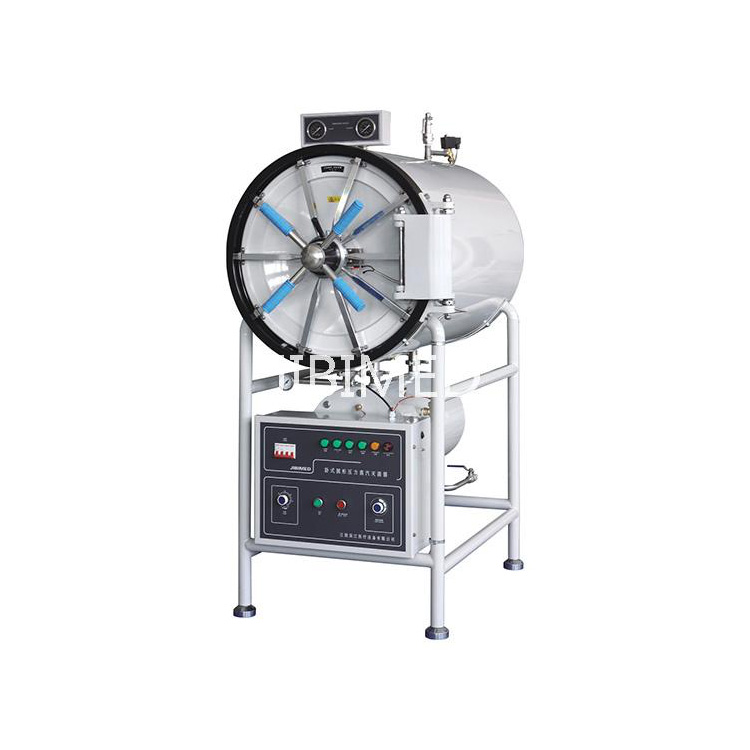Enhancing Efficiency and Productivity: The Automation Feature of Autoclaves
2024-03-21
Enhancing Efficiency and Productivity: The Automation Feature of Autoclaves
In the realm of sterilization and sanitation, autoclaves stand as indispensable tools, ensuring the safety and integrity of various materials in industries ranging from healthcare to research laboratories. Traditionally, autoclaves required significant manual intervention, leading to time-consuming processes and potential human errors. However, with advancements in technology, the integration of automation features has revolutionized the efficiency and productivity of autoclaves, providing numerous benefits across diverse sectors.
Automation in autoclaves encompasses a range of features designed to streamline operations, optimize sterilization cycles, and minimize user involvement. These features leverage cutting-edge technologies such as sensors, programmable logic controllers (PLCs), and advanced software algorithms to automate key functions, thus offering several advantages:
1. Precision Control: Automation allows for precise control over sterilization parameters such as temperature, pressure, and exposure time. This ensures consistent and reliable sterilization cycles, eliminating variations caused by human error. With automated systems, users can set predefined parameters, and the autoclave will execute the process with remarkable accuracy, leading to higher quality outcomes.
2. Time Efficiency: By automating repetitive tasks and optimizing cycle times, automation significantly reduces the overall sterilization process duration. Autoclaves equipped with automation features can execute sterilization cycles more rapidly compared to manual operation, thereby increasing throughput and productivity. This time efficiency is particularly crucial in industries where quick turnaround times are essential, such as healthcare facilities and research laboratories.
3. Resource Optimization: Automated autoclaves intelligently manage resources such as water, energy, and consumables, leading to efficient utilization and cost savings. These systems can regulate water consumption during the sterilization process, minimize energy usage by optimizing heating and cooling cycles, and ensure the judicious use of sterilization agents and consumables. By reducing resource wastage, automation contributes to both economic savings and environmental sustainability.
4. Data Logging and Traceability: Automation features enable comprehensive data logging and traceability, providing valuable insights into sterilization processes. Autoclaves equipped with advanced software systems can record and store data regarding cycle parameters, batch information, and user settings. This data can be utilized for process optimization, compliance with regulatory requirements, and quality assurance purposes. Additionally, the traceability offered by automation enhances accountability and transparency in sterilization operations.
5. Remote Monitoring and Control: Many automated autoclaves are equipped with remote monitoring and control capabilities, allowing users to oversee sterilization processes from a distance. Through intuitive interfaces and connectivity options, operators can monitor cycle progress, adjust settings, and receive real-time notifications or alerts. This remote accessibility enhances operational flexibility, enabling users to manage multiple autoclaves simultaneously and respond promptly to any issues or anomalies.
6. Enhanced Safety Features: Automation enhances the safety of autoclave operations by implementing advanced safety protocols and interlocks. These features ensure compliance with regulatory standards and mitigate risks associated with human error or equipment malfunction. Automated systems can detect deviations from preset parameters, automatically halt operations in case of emergencies, and provide alerts to operators, thereby safeguarding both personnel and equipment.
In conclusion, the automation feature of autoclaves represents a significant leap forward in sterilization technology, offering unparalleled efficiency, productivity, and reliability. By harnessing the power of automation, industries can streamline sterilization processes, optimize resource utilization, and elevate the quality and safety of their products and services. As automation continues to evolve, autoclaves are poised to play an even more integral role in maintaining the highest standards of hygiene and sanitation across various sectors.



